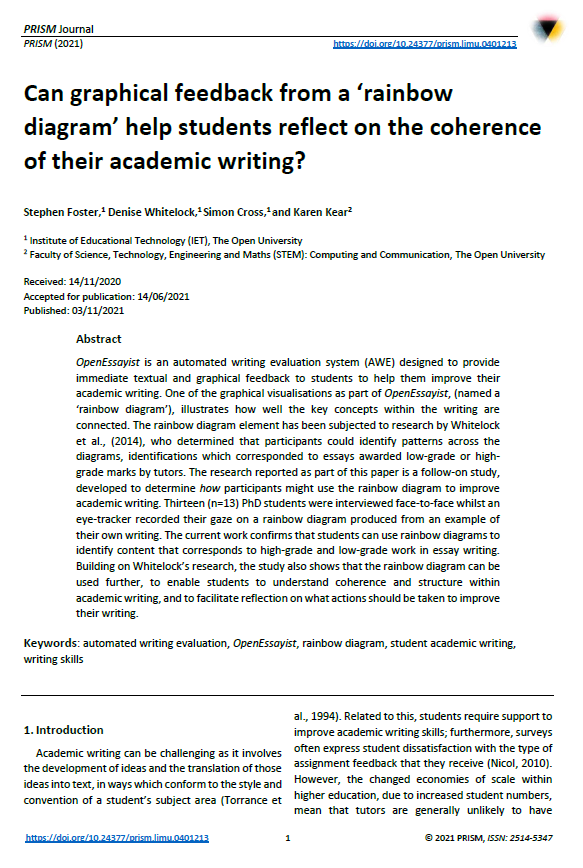To what extent can graphical feedback from a ‘rainbow diagram’ help students develop coherence in their academic writing?
DOI:
https://doi.org/10.24377//prism.ljmu.0401213Keywords:
automated writing evaluation, OpenEssayist, rainbow diagram, student academic writing, writing skillsAbstract
OpenEssayist is an automated writing evaluation system (AWE) designed to provide immediate textual and graphical feedback to students to help them improve their academic writing. One of the graphical visualisations as part of OpenEssayist, (named a ‘rainbow diagram’), illustrates how well the key concepts within the writing are connected. The rainbow diagram element has been subjected to research by Whitelock et al., (2014), who determined that participants could identify patterns across the diagrams, identifications which corresponded to essays awarded low-grade or high-grade marks by tutors. The research reported as part of this paper is a follow-on study, developed to determine how participants might use the rainbow diagram to improve academic writing. Thirteen (n=13) PhD students were interviewed face-to-face whilst an eye-tracker recorded their gaze on a rainbow diagram produced from an example of their own writing. The current work confirms that students can use rainbow diagrams to identify content that corresponds to high-grade and low-grade work in essay writing. Building on Whitelock’s research, the study also shows that the rainbow diagram can be used further, to enable students to understand coherence and structure within academic writing, and to facilitate reflection on what actions should be taken to improve their writing.
Downloads

Downloads
Published
Issue
Section
License
Authors retain copyright and grant the journal the right of first publication with the work.
The version of the article published as part of this issue is licensed under a Creative Commons Attribution-NonCommercial-NoDerivatives 4.0 International Licence and allows others to read, download, copy, distribute, print, search, link to the full text of the first version of this article, or to use it for any other lawful purpose in accordance with the license. The author maintains copyright for the article published in this journal.
This journal provides immediate open access to its content and has no submission or publication fees.


